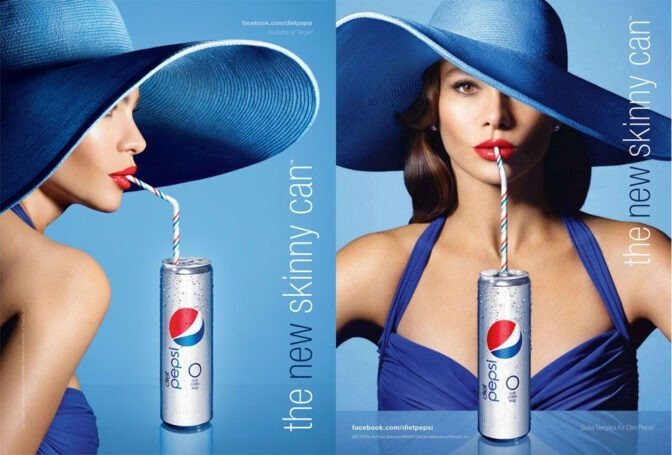In a highly competitive and low involvement segment, major players achieved success through innovative advertisements which captured the customers’ mind share. Over the years, promotions, product design, packaging and other Point of Purchase plans helped large players survive in this segment but the key factor which makes any player unique in the market is its “Brand Image.” It is an image of the personality of a brand in the consumer’s mind which can be developed over years with a consistent message delivered through different means. The organizations which plan to develop a strong brand must take strategic or tactical decisions based on core value proposition of their brand. The role of advertising becomes crucial in developing a brand strategically.
Before going into the details of advertising strategies, let us first understand what low involvement product segment is. It was Herbert Kruggman who introduced the concept of high and low involvement products. Products fall under low involvement category if they are inexpensive and pose low risk to the consumer if he/she makes a mistake in the purchase decision. Consumers don’t spend much time in search of the product and it leads to impulse buying behaviour. For example, in India 70% of deodorant purchase decisions are made at impulse. The following table depicts the key differences between low and high involvement purchase decisions:
|
High Involvement Purchase Decision
|
Low Involvement Purchase Decision
|
|
Less frequently purchased
|
Bought more frequently
|
|
More complex
|
Less Complex
|
|
Expensive in nature
|
Less costly
|
|
Requires more time and effort in the research phase
|
Usually bought with a minimum amount of thought and effort
|
In a conventional purchase consumers follow following six steps before actual purchase:
Whereas in a low involvement purchase, consumers bypass few steps of the conventional purchasing process:
“Knowledge about the product” does not have a major impact in the low involvement purchase decision. This means, when a consumer feels hungry and sees a bag of chips on the shelf, he/she picks it up without thinking much. Thus in a low involvement product category, the steps involved in purchasing decision are less and mere product awareness might be sufficient for inducing a buying behaviour.
So, it might appear that enticing a consumer to buy a certain brand’s product of low involvement segment is relatively simple but what if there are multiple brands of chips on the same shelf. In a low involvement product category, the alternatives are extremely similar. So the step “Preference over alternative products” becomes crucial which leads to a new challenge i.e. how should companies differentiate their brands from that of their competitor’s?
This is where “Brand Recall” comes into picture. For a low involvement category promotions, product design, packaging, design of in-store merchandise and other components of Point-of-Purchase are necessary. But branding is crucial as brand awareness alone could lead to the consumer choosing a product based on familiarity of the brand. The critical challenge any organization encounters is building a strong brand with consistent message. Selecting the right “Marketing Communications Mix” i.e. communication strategy, budget allocation within the selected ones to deliver the core brand value proposition plays an important role in building a brand. Some of the key marketing communication tools are advertising, sales promotion, public relation and publicity. Most of the major players invest in advertising to connect emotionally to the consumer as the emotional connect is key to develop a strong and lasting brand. Brand awareness can be created and enhanced by increasing the familiarity of the brand through repeated exposure. When consumers have sufficient exposure to the brand by hearing, seeing or thinking about it, the brand takes a root in the memory. So advertising is an efficient tool to etch the brand name in consumer’s mind.
Advertising has the ability to reach a wide geographically dispersed market. Even the consumers believe that a brand advertising heavily should offer a good value. So advertising has a vital role in delivering the message of brand efficiently. It is a common belief that emotional content in advertising can persuade consumers to prefer the brand even when the effect of rational content is minimal. Research has shown that there is a significant positive relationship between attitude toward emotional advertisement and attitude towards brand that leads to purchase intention.
Unfortunately life is not that easy. According to a study of low involvement product categories, the consumers are finding it difficult to recall even three brands, often stopping at two. This is true with advertisements also where consumers are not able to recall more than three advertisements. So brands started using verbal magnifiers (slogans like ‘Badhaiya Hai’, ‘Mummy’), celebrities (like actors, cricket players) and repeat message (telecasting ads repeatedly) to entrench into the consumer’s memory. But still there are many challenges in gaining consumer’s mind share which have to be overcome through innovative ad concepts.
Apart from innovation, even the phase in which the product is positioned in its life cycle has an impact on advertisement strategy. Strategies employed in developing advertisements must be in alignment with phase of the product in which the product or brand is positioned in a product life cycle curve. For new products, initial advertising often concentrates on creating brand awareness but subsequent advertising attempts to craft the brand image.
Product Awareness Marketing is used in the introductory stages of the brand. This majorly impacts awareness with use of both rational and emotional benefits of the product. Given that a brand has acquired consumer’s mind space and unaided awareness through its present positioning, the growth stage should be supported by Product Preference Marketing which emphasizes on the consumers’ purchase attitude along with rational and emotional benefits. Hence a brand should transition from Product Awareness Marketing to Product Preference Marketing after achieving a significant market share.
Though tremendous efforts are being made by organizations to make clutter breaking advertisements, one should realize that persuasion cannot be achieved through ads. One cannot make consumers to “run out and buy” the products through advertisements. The role of advertisements is to make a consumer recall a brand easily which leads to purchase intention after which a multitude of factors determine sale of the product.
[The article has been written by Shravan Kumar Potnuru. He is presently pursuing his PGDM from IIM Indore.]



































